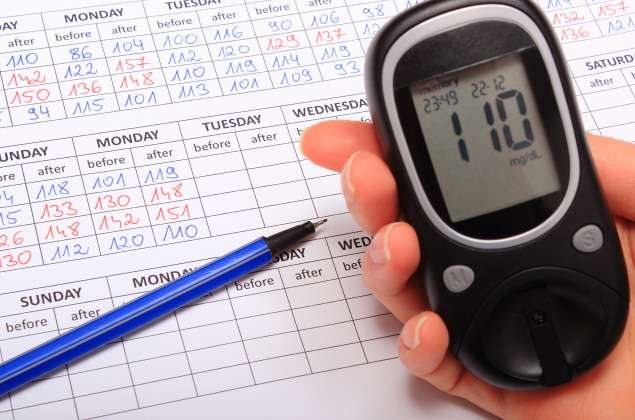86 million Americans aged 20 years or older had prediabetes in 2010 according to The Centers for Disease Control and Prevention (CDC). Prediabetes is a condition that your blood glucose levels are higher than normal, but not yet high enough to be diagnosed as diabetes.
The vast majority of people living with prediabetes do not know they have it. Jay Harold wants to increase awareness of this health condition and to prevent its progression to diabetes. The CDC is one of the United States premiere health agencies and its information about pre-diabetes was used extensively in this post.
Results indicating pre-diabetes are:
- An A1C of 5.7% – 6.4%
- Fasting blood glucose of 100 – 125 mg/dl
- An OGTT 2-hour blood glucose of 140 mg/dl – 199 mg/dl
African Americans are More Likely to Get Diabetes
Prediabetes is a serious health condition that increases the risk of developing type 2 diabetes, heart disease, and stroke. Half of all Americans aged 65 years and older have prediabetes. Without lifestyle changes to improve their health, 15% to 30% of people with prediabetes will develop type 2 diabetes within five years. African Americans are disproportionately affected by diabetes: 13.2% of all African Americans aged 20 years or older have diagnosed diabetes. African Americans are 1.7 times more likely to get diabetes than non-Hispanic whites. Diabetes was the fourth leading cause of death for African Americans in 2010.
How can Type 2 Diabetes be Prevented?
Research from the CDC shows that modest weight loss and regular physical activity can help prevent or delay type 2 diabetes by up to 58% in people with prediabetes. Moderate weight loss means 5% to 7% of body weight, which is 10 to 14 pounds for a 200-pound person. Getting at least 150 minutes each week of physical activity, such as brisk walking, is also important.
The lifestyle change program offered through the National Diabetes Prevention Program—led by the CDC—can help participants adopt the healthy habits needed to prevent type 2 diabetes. Trained lifestyle coaches lead classes to help participants improve their food choices, increase physical activity, and learn coping skills to maintain weight loss and healthy lifestyle changes.
Many factors increase your risk for pre-diabetes and type 2 diabetes. To find out more about your risk, see which characteristics in this list apply to you.
- I am 45 years of age or older.
- I have a parent with diabetes.
- I am overweight.
- I have a sister or brother with diabetes.
- My family background is African-American, Hispanic/Latino, American-Indian, Asian-American, or Pacific-Islander.
- I had diabetes while I was pregnant (gestational diabetes), or I gave birth to a baby weighing 9 pounds or more.
- I am physically active less than three times a week.
The Toll Diabetes Takes on You and Your Family
Jay Harold has five of the seven characteristics listed above! He witnessed the tremendous physical, and mental toll diabetes has on your loved ones. He has looked at his mother’s feet and prayed that they wouldn’t be amputated. Jay Harold watched his mother’s eyesight get worse because of diabetes. He has received the phone call from the emergency room telling him that his sister’s blood glucose level is over 500 mg/dl. Jay Harold has talked to hundreds of people about how to manage their diabetes. He has seen a classmate die and a cousin lose part of a toe to this disease. Awareness of Prediabetes is important because there is hope based on lifestyle changes. Despite the five characteristics, Jay Harold is not a prediabetic!
It is important to find out early if you have prediabetes or type 2 diabetes, because early treatment can prevent serious problems that diabetes can cause, such as loss of eyesight or kidney damage.
Are You Pre-Diabetic?
Find out if you could have pre-diabetes by taking the online quiz on this page. If the quiz shows you could have prediabetes, talk to a healthcare provider as soon as possible. You can also download and print a copy at Prediabetes Screening Test. If you are 45 years of age or older, you should consider getting a blood test from a health care provider for pre-diabetes and diabetes, especially if you are overweight. Weight loss should be achieved by making modest lifestyle changes to improve nutrition and increase physical activity. People whose test results indicate they have prediabetes should have their blood glucose levels checked again in 6 months to 1 year. Make a change for life! Find out if there is a National Diabetes Prevention Program offered in your community.
Jay Harold stresses that you take advantage of the resources provided by the CDC and follow up with your doctor. Jay Harold also recognizes that talking to doctors presents challenges to the black community. The lack of two-way communication between doctors and African Americans could contribute to reduced usage of the healthcare system. Jay Harold addresses this problem in the post “Talking to Doctors Presents Challenges for African Americans.”
Click this link to get free Health and Wealth information to improve your life. Play the free “Slow Roll Through Civil Rights” Game found on the Jay Harold website. Enjoyed this post? Share it and read more here.






